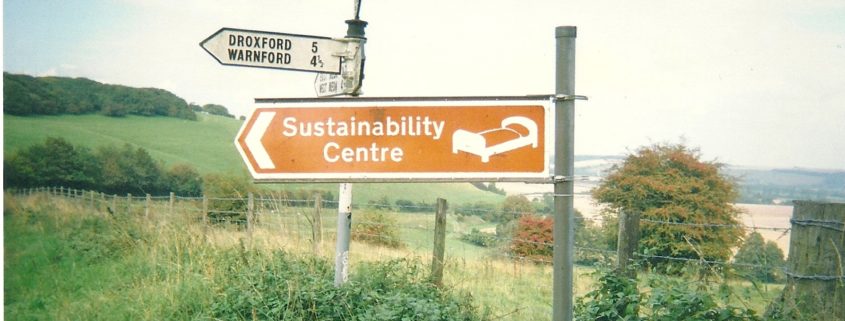NCBA Out & About: A Hike Along England’s South Downs Way
There are few better opportunities for relaxation and rejuvenation than a long walk. English national trails take it to a new level.
In the bracing air along the Seven Sisters, the prominent chalk cliffs overseeing the English Channel, I encounter a fellow hiker who recommends a 13th-century inn in Alfriston as a perfect first night‘s stay. Later, in the gloaming along the Cuckmere River, a gentleman farmer pauses while working in his field to point out a distant steeple, advising that if I stick to the river path I will be in Alfriston ere long.
Of the English walks officially designated as “national trails,” one of the most historic and varied is but a 50-mile train ride south of London. Beginning in Eastbourne on the English Channel, the South Downs Way wends westward one hundred miles through a national park – along coastal cliffs, inland atop an escarpment, and through the woods, to Winchester. (See www.nationaltrail.co.uk/southdowns.) I cannot resist taking six days to walk it solo.
In Alfriston at the George Inn, the young clerk indicates that yes, she has a room and can set me a table while I head upstairs to “tidy up a bit.” Refreshed, I savor lamb cutlets and local produce, tacking on a dram of Laphroig single malt Scotch for dessert.
In the morning the flint-strewn trail ascends the ridge line and settles in to a relentless up-and-down rhythm. Panoramic vistas abound, south to the English Channel and north over flowing open fields and bucolic villages. Other trail hikers, day walkers, and cyclists stop for a chat. A group of para-gliders floating lazily in the wind assure me their hobby is even more delightful than it appears.
Knackered after a 19-mile day, I arrive at the tidy White House B & B in Pyecombe. The smiling owner senses my weariness, hands me an icy Stella Artois, and directs me to a hot shower. Cordial English fellow hikers and lodgers and I later decide to bring food back to the B & B for an evening of grazing, tippling and enlightening discussion on a range of topics. A deep sleep and full English breakfast leave me eager to resume my amble.
It does not take long to learn that English walkers cherish their canine companions. Irish Wolfhounds, Scottish Deerhounds, West Highland Terriers, German Short-Hairs, and Welsh Springer Spaniels, to name a few, bound along merrily, sometimes dashing into adjacent fields to flush partridges.
Late in the afternoon at the crest of a hill appears what looks like a swaggering black bear. The “bear” turns out to be the family’s imposing Black German Shepherd, highly efficient in protecting the farm’s lambs from foxes. Following my inquiry, the farm’s owner responds that bed and breakfast is available. The next morning at breakfast the dog lies peacefully at my feet while the family’s infant daughter plays nearby.
Interesting food choices are never far away. Especially memorable are a simply elegant salmon and prawn lunch (with local ale) in Houghton at the George and Dragon, a perfectly cooked venison feast in Cocking at the Blue Bell Inn, delicate fish and chips (with locally produced New Forest Ice Cream for dessert) in Meonstoke at the Bucks Head, and uniquely conceived and prepared beef and local vegetables at the Michelin-rated Black Rat in Winchester. A trailside “sustainability centre” (what is that, I wonder?) features locally sourced organic vegetarian chili, bread, and lager. Alongside the trail, bounteous ripe blackberries provide ideal snacks.
The route abounds with 5,000-year-old forts, burial barrows and villages. These include the Devil’s Jump Mounds, a group of nine prehistoric burial mounds rising about 15 feet above the ground. The most prominent abandoned ancient village is Old Winchester Hill; it remains little understood and not fully excavated (as a gesture of respect). More recent historic sites are World War II machine gun pillboxes and the field where Eisenhower addressed Allied troops on the eve of D-Day.
Trail’s end at Winchester features its iconic 1,000-year-old cathedral, largest in the world measured end to end. The crystal clear River Itchen, of Izaak Walton fame, flows through the heart of town. An older gentleman intently trout fishing there caught two nice ones the day before; I mightily resist the urge to ask to have a go. That is when I realize that the trout and I have shared a similar fate: I too have been hooked, by my long walk of the South Downs Way.
Jonathan Maxwell is an attorney in Greensboro. He can be reached at [email protected].
Have a travel story you’d like to share with the NCBA? Send it to Amber Nimocks at [email protected].




